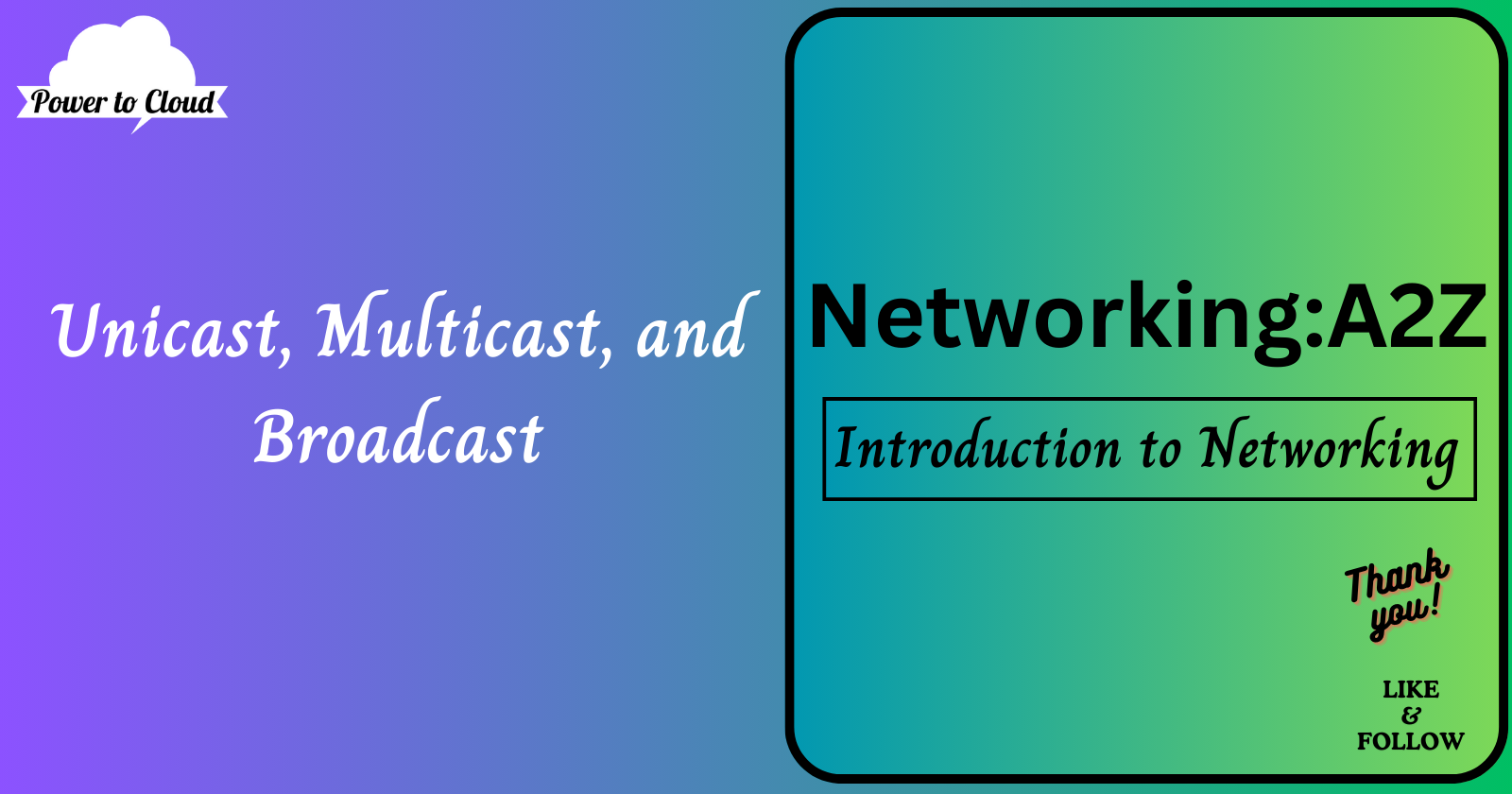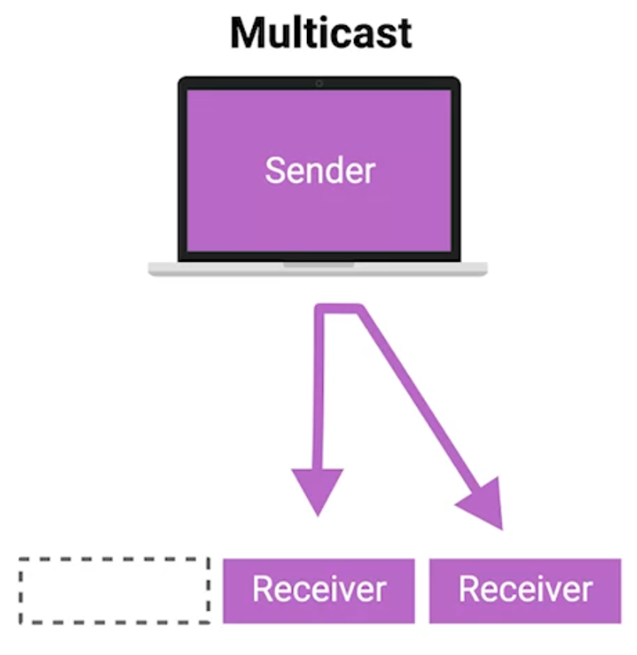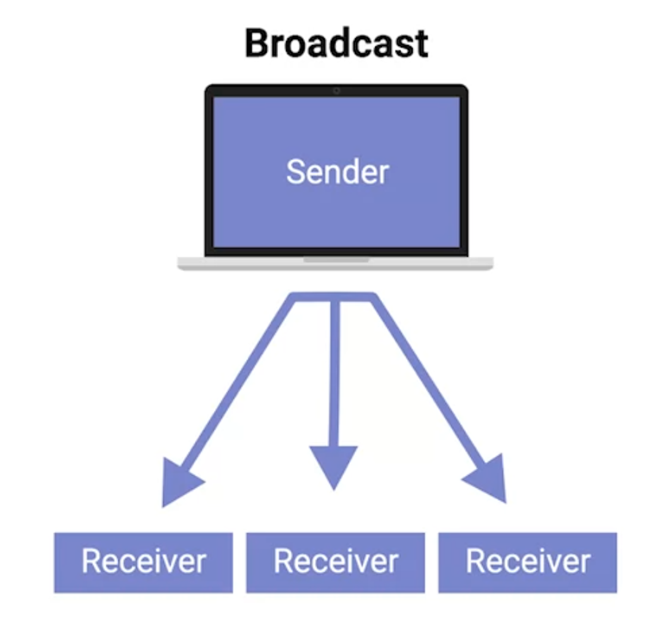1.7 Unicast, Multicast, and Broadcast
 Vijay Kumar Singh
Vijay Kumar Singh
Introduction
In the world of computer networking, three main types of data transmission exist – Unicast, Multicast, and Broadcast. Each type plays a crucial role in how communication occurs between devices in a network. Understanding the nuances of these transmission types is key for anyone involved in network design, implementation, or troubleshooting.
Unicast: Direct One-to-One Communication
Unicast is the most common form of network communication, and it's the one we're most familiar with in our daily internet usage. In unicast transmission, one device (the sender) transmits data directly to another device (the receiver). The data is intended for just one receiving address, creating a direct line of communication between the sender and the receiver.
Unicast transmission is determined when the least significant bit in the first octet of a destination address is set to zero in the destination MAC address. What this means is that the data is explicitly addressed to a specific receiver, and no other device on the network is intended to process this data.
An interesting aspect of unicast transmission in Ethernet networks is that the Ethernet frame is sent to all devices on the collision domain. However, it's only received and processed by the device with the matching MAC address. This ensures the privacy and security of the data being transmitted.
Multicast: Efficient One-to-Many Communication
Moving from one-to-one communication, we come to Multicast, which is a form of one-to-many network communication. In multicast transmission, one device transmits data to a specific group of devices on the local network segment. The data is not intended for all devices on the network, but only those that are part of this specific group

Multicast transmission is determined when the least significant bit in the first octet of the destination address is set to one. Each device on the network decides whether to accept or discard the multicast frame based on criteria aside from their own hardware MAC address.
Network interfaces can be configured to accept lists of configured multicast addresses for these communications. This makes multicast an extremely efficient method of data transmission for scenarios like live video broadcasting or streaming, where the same data needs to be received by multiple devices simultaneously.
Broadcast: Ubiquitous One-to-All Communication
Broadcast is the third type of data transmission, and it's unique in that it's a one-to-all form of communication. In a broadcast transmission, data is sent to every single device on a Local Area Network (LAN). This is accomplished by using a special destination known as a broadcast address - the Ethernet broadcast address is all F's.

Broadcast communication is used for devices to learn more about each other. It's an essential part of network discovery and announcements, allowing devices on the network to effectively "introduce" themselves and share their capabilities. However, overuse of broadcast communication can lead to network congestion, a scenario commonly known as a broadcast storm.
Conclusion
Unicast, multicast, and broadcast transmissions each serve different purposes in a network. Unicast provides direct one-to-one communication, multicast offers an efficient one-to-many communication method, and broadcast ensures ubiquitous one-to-all communication. Each type has its strengths and considerations, and they all play critical roles in different aspects of networking.
Understanding these types of data transmission can aid greatly in designing networks, managing data flow, and troubleshooting network issues. After all, effective network communication is all about ensuring that the right data gets to the right place, at the right time.
Subscribe to my newsletter
Read articles from Vijay Kumar Singh directly inside your inbox. Subscribe to the newsletter, and don't miss out.
Written by

Vijay Kumar Singh
Vijay Kumar Singh
I'm Vijay Kumar Singh, a Linux, DevOps, Cloud enthusiast learner and contributor in shell scripting, Python, networking, Kubernetes, Terraform, Ansible, Jenkins, and cloud (Azure, GCP, AWS) and basics of IT world. 💻✨ Constantly exploring innovative IT technologies, sharing insights, and learning from the incredible Hashnode community. 🌟 On a mission to build robust solutions and make a positive impact in the tech world. 🚀 Let's connect and grow together! #PowerToCloud